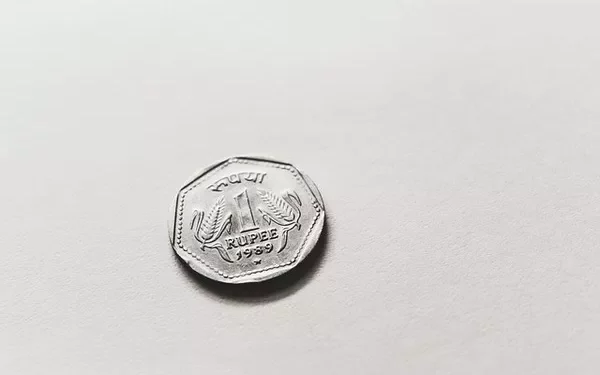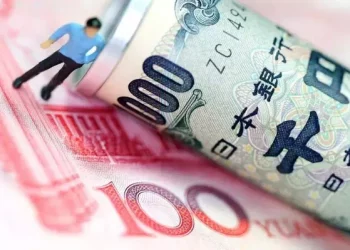The conversion of currencies is a fundamental aspect of international finance, trade, and travel. Understanding how much a specific amount of one currency is worth in another currency can be crucial for individuals and businesses engaged in cross-border transactions. This article explores the conversion of 10,000 Indian Rupees (INR) to Australian Dollars (AUD), offering insights into the factors influencing exchange rates, the methodologies used for conversion, and the implications of currency fluctuations on financial decisions.
Understanding Exchange Rates
The Concept of Exchange Rates
Exchange rates represent the value of one currency in terms of another. They fluctuate based on various economic factors, including inflation, interest rates, and geopolitical events. Exchange rates can be expressed in different ways, such as direct or indirect quotes, but the principle remains the same: they provide a measure of how much one currency is worth relative to another.
In the context of INR to AUD, the exchange rate tells us how many Australian Dollars can be obtained for 10,000 Indian Rupees. This rate is determined by the foreign exchange market, which operates as a decentralized marketplace for trading currencies.
Factors Influencing Exchange Rates
Several factors influence exchange rates between INR and AUD. Economic indicators such as GDP growth, inflation rates, and employment figures play a significant role. Additionally, central bank policies, trade balances, and market sentiment can impact exchange rates. For instance, if the Reserve Bank of India raises interest rates, it could strengthen the INR relative to the AUD. Conversely, changes in Australia’s economic conditions or monetary policy might affect the AUD’s value against the INR.
Calculating the Conversion
Current Exchange Rate
To determine how much 10,000 INR is worth in Australian Dollars, one must first know the current exchange rate. Exchange rates can be obtained from various sources, including financial news websites, currency converter tools, and banks. As of the latest data, the exchange rate fluctuates, so it’s important to check a reliable source for the most up-to-date rate.
For example, the current exchange rate is 1 INR = 0.018 AUD, the calculation would be straightforward: multiplying 10,000 INR by 0.018 AUD would yield 180 AUD. However, this rate varies daily based on market conditions, so it’s essential to use the most recent rate for accurate conversion.
Using Online Tools
Numerous online tools and currency converters can simplify the process of converting INR to AUD. These tools provide real-time exchange rates and perform automatic calculations. Users simply input the amount in INR, and the tool displays the equivalent amount in AUD. While convenient, it’s crucial to verify the accuracy of the tool and the exchange rate it uses, as rates can vary slightly between different platforms.
Exchange Rate Trends and Historical Data
Historical Exchange Rates
Examining historical exchange rate data can provide context for the current value of 10,000 INR in AUD. Historical trends reveal how the INR and AUD have fluctuated over time, influenced by economic events, policy changes, and global financial conditions. For instance, over the past five years, the INR may have strengthened or weakened against the AUD based on various factors. Analyzing these trends can offer insights into future movements and assist in making informed financial decisions.
Current Trends and Market Analysis
To understand the present value of 10,000 INR in AUD, it’s helpful to consider current market trends. Financial analysts and economists use technical analysis, economic indicators, and market sentiment to assess the future direction of exchange rates. Current trends, such as changes in commodity prices, geopolitical events, or shifts in economic policies, can influence the INR/AUD exchange rate.
Practical Implications of Currency Conversion
Impact on International Transactions
For individuals and businesses involved in international transactions, understanding the conversion of 10,000 INR to AUD is vital. For example, if a business in Australia imports goods from India, the conversion rate affects the cost of these goods. A favorable exchange rate can reduce costs, while an unfavorable rate can increase expenses. Similarly, individuals traveling from India to Australia will need to convert their INR to AUD, and the exchange rate will determine how much spending money they receive.
See Also: Current INR Exchange Rate: 100,000 INR to USD
Currency Conversion Costs
When converting currencies, it’s essential to consider additional costs beyond the exchange rate itself. Financial institutions and currency exchange services often charge fees or offer less favorable rates than those available in the open market. These costs can include transaction fees, service charges, or margin adjustments. Understanding these costs helps individuals and businesses evaluate the true cost of currency conversion and make informed decisions.
Exchange Rate Forecasts and Future Outlook
Expert Predictions
Financial experts and analysts often provide forecasts and predictions regarding future exchange rates. These forecasts are based on economic models, historical data, and current market conditions. While predictions can offer guidance, they are not guaranteed, as exchange rates are subject to a wide range of influences. For instance, changes in global economic conditions, interest rate adjustments by central banks, or significant geopolitical events can impact future exchange rates.
Strategies for Managing Currency Risk
Businesses and individuals exposed to currency fluctuations can employ various strategies to manage risk. Hedging techniques, such as forward contracts or options, allow parties to lock in exchange rates for future transactions, mitigating the impact of unfavorable rate movements. For those planning international travel or transactions, understanding and anticipating exchange rate trends can help in budgeting and financial planning.
Case Study: Conversion Impact on Business and Personal Finance
Business Case Study
Consider a scenario where an Australian company imports textiles from India, with a transaction amounting to 10,000 INR. The exchange rate at the time of the transaction significantly impacts the cost of the imported goods. If the INR appreciates against the AUD, the cost in AUD decreases, benefiting the Australian company. Conversely, if the INR depreciates, the cost in AUD increases, impacting the company’s profitability.
Personal Finance Case Study
For individuals, such as tourists or expatriates, converting 10,000 INR to AUD involves assessing how much local currency they receive for their INR. An advantageous exchange rate can enhance their purchasing power while traveling or residing in Australia. Conversely, a less favorable rate may limit their budget or necessitate additional currency exchange transactions.
Conclusion
The conversion of 10,000 Indian Rupees to Australian Dollars illustrates the broader concept of currency exchange and its impact on financial decisions. Exchange rates, influenced by various economic and geopolitical factors, determine the value of one currency relative to another. Understanding how to calculate and interpret these rates, along with considering historical trends and current market conditions, is essential for making informed financial decisions.
Whether for personal travel, international business transactions, or investment purposes, the accurate conversion of currencies is crucial. By utilizing reliable exchange rate data, considering transaction costs, and employing strategies to manage currency risk, individuals and businesses can navigate the complexities of international finance effectively.
Related Topics:
























